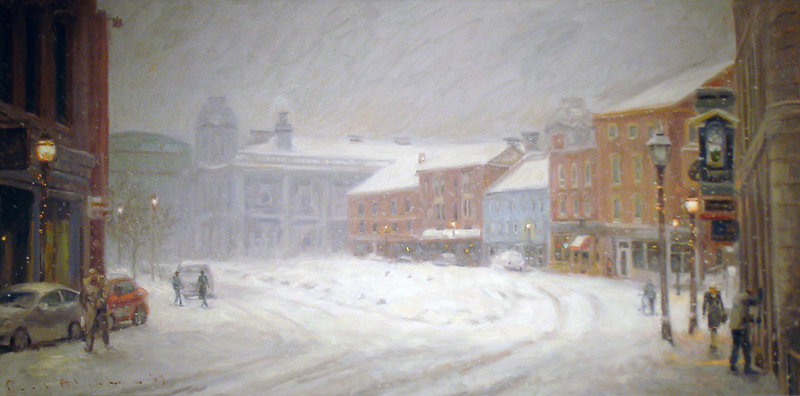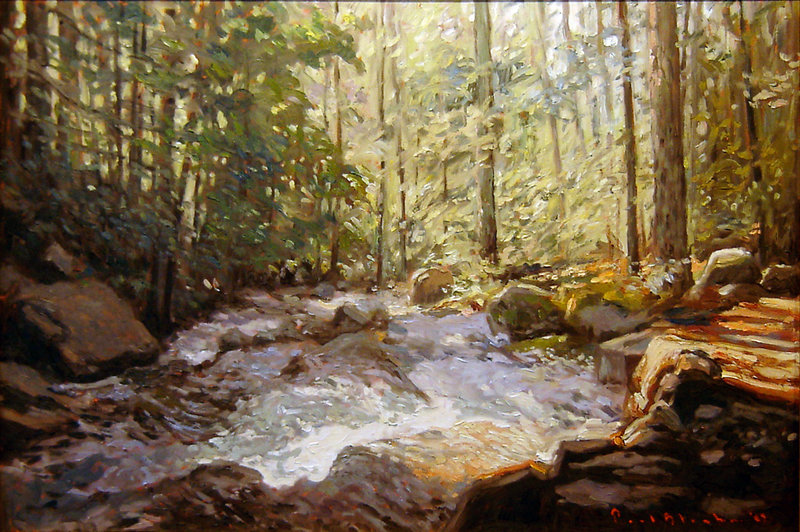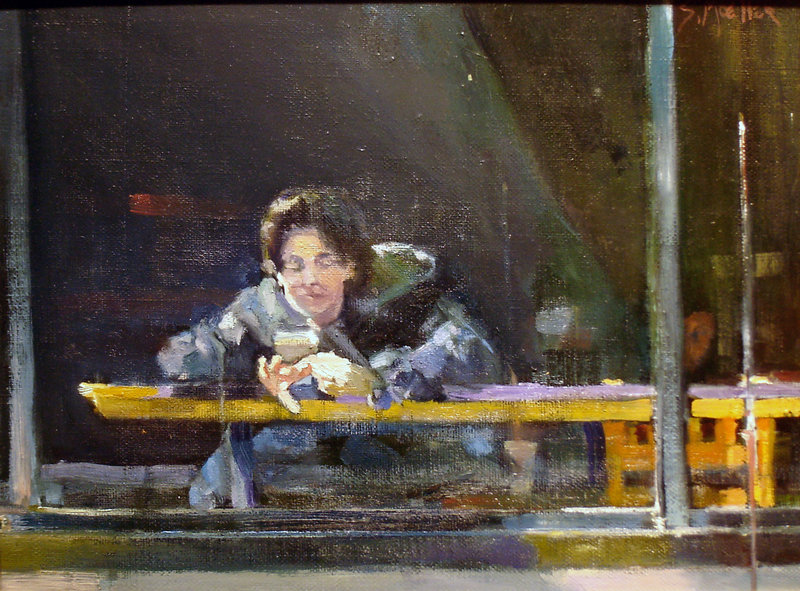One of the greatest things about paintings is that you set your own pace for looking at them. You can see a lot in just a few seconds, or you can gaze at one for hours.
Arts such as music, movies and theater, on the other hand, control the length of your experience. Some even require that you sit still quietly as part of a passive and attentive audience.
I once had an encounter with a couple at the Metropolitan Museum of Art in front of Edouard Manet’s “Dead Christ with Angels.” They passed me on their way to the modern wing. When they were done — about two hours later — they found me still standing in front of the Manet. They asked me what I was looking at, and we had a terrific conversation. Manet was a genius, and took a full month to paint the “Dead Christ” — so it is not surprising that the picture is loaded with depth and complexity.
The “Dead Christ” was painted for the 1864 Salon — the annual juried show at the Louvre that was the sine qua non of any ambitious painter. The Louvre was hung floor to ceiling with important paintings (the source of the term “salon-style”), and everyone — rich and poor — came to see them.
While the Salon made and broke careers, Manet’s “Dead Christ” was panned by the critics, and yet he has utterly eclipsed all of that season’s favorites such as Jules Breton or Alexandre Cabanel.
It’s interesting we now equate serious art with the presentation of a single series by a single artist in a commercial gallery. In fact, with his haystacks and cathedral facades, Claude Monet invented what we now think of as an artist’s “series.”
Galleries of Monet’s time did not look like the DeGennaro show at Aucocisco (which I reviewed last week) but rather more like the Fore Street Gallery, which is continually hung salon-style with scores of works by many artists.
One of the strongest Fore Street Gallery artists is Paul Black, whose impressionist-style winter scenes of Portland are instantly recognizable. Black’s confidently loose brushwork seems to be at its best in his snow scene paintings, because he finds and maintains the atmospheric tone familiar to anyone who has seen snow falling in Portland on a winter evening. Black captures the slightly murky haze of the falling snow as it reveals the cozy quaintness of the city.
This might sound kitschy, but it’s not. In fact, Black succeeds so well precisely because he is not afraid to let his purple-gray sense of light reveal a little mud here and there. He does nothing to dress up the city. He loves it as he sees it and tells us that with a gorgeously honest brush.
Black gets how our seaside atmosphere is moist even in the snow, and he knows how to paint it.
While I am most drawn to Black’s Portland paintings, his landscapes are also quite strong. I was particularly impressed with a jaunty image of a stream on Mount Desert Island. It is an unusually dynamic and lively rendering of Maine’s natural landscape. The brushwork, the light, the sense of place and the stream all pulse in tandem with life and energy.
I also found myself drawn again and again to Black’s painting of Portland’s eastern waterfront. It is three-quarters sky puffed with clouds soaring over patches of light-blue welkin. Black’s sense of rhythm is spot-on, both with the buildings ambling along the water and the cumulus cloudscape. He is not afraid to charm, and he has the chops to do it.
I think my favorite painting at Fore Street Gallery is Stan Moeller’s “Coffee Break” — a 9-by-12-inch oil on canvas (like most works in this traditional gallery, it sits in a generous gold frame) of a coffee drinker seen through a large window.
The brushwork is loose and elegantly rhythmic. Moeller nails the effect of the light reflecting on the window, and the self-absorbed figure in a casual down moment is easy to look at and enjoy.
The gallery is set up so you can let yourself be drawn to what appeals to you. There are too many works (about 200) on the walls to even consider looking at every one. While there are works that are too cute or quaint for my own taste, I can’t picture even one of them, because I spend my time there looking at works I enjoy — and there are plenty.
Freelance writer Daniel Kany is an art historian who lives in Cumberland. He can be contacted at:
dankany@gmail.com
Copy the Story Link
Send questions/comments to the editors.





Success. Please wait for the page to reload. If the page does not reload within 5 seconds, please refresh the page.
Enter your email and password to access comments.
Hi, to comment on stories you must . This profile is in addition to your subscription and website login.
Already have a commenting profile? .
Invalid username/password.
Please check your email to confirm and complete your registration.
Only subscribers are eligible to post comments. Please subscribe or login first for digital access. Here’s why.
Use the form below to reset your password. When you've submitted your account email, we will send an email with a reset code.